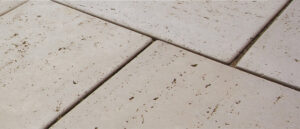
PIC-Flickr
Understanding the Labeled Map of the World: A Visual Guide to Global Geography
labeled:v-xzjijklp4= map of the world is an essential tool for understanding global geography. Whether you’re a student, a traveler, or just someone interested in expanding your knowledge of the world, a detailed world map can provide an easy-to-follow reference for locating countries, continents, oceans, and major cities.
In this guide, we will walk you through the key components of a labeled map of the world, its importance, and how it can be used to explore our planet.
1. What is a Labeled Map of the World?
A labeled map of the world includes clear markers for various geographical elements such as:
- Continents: Seven large landmasses – Asia, Africa, North America, South America, Antarctica, Europe, and Australia.
- Countries: Each country is distinctly separated by borders, and labels show the names of nations from the largest (Russia) to the smallest (Vatican City).
- Oceans: Major water bodies like the Pacific, Atlantic, Indian, Southern, and Arctic Oceans.
- Major Cities and Capitals: Important urban centers and capital cities that are significant economically, politically, or culturally.
This kind of map gives viewers an organized, easy-to-navigate representation of Earth.
2. Components of a Labeled World Map
Continents:
The world is divided into seven continents. These large landmasses are the foundation of a world map. Each continent is often shown in different colors to clearly distinguish them:
- Asia: The largest continent, home to countries like China, India, and Russia.
- Africa: Known for its rich natural resources and diverse cultures, with nations like Nigeria, Egypt, and South Africa.
- North America and South America: Stretching from Canada to Argentina, these continents feature varied landscapes, from dense rainforests to vast deserts.
- Europe: A continent rich in history, home to the European Union, and countries like Germany, France, and Italy.
- Australia: The smallest continent, often combined with nearby Pacific islands to form Oceania.
- Antarctica: The frozen, uninhabited continent at the southernmost part of the globe.
Countries:
Each of the world’s nearly 200 countries is clearly marked with borders. A labeled map provides not just the country names but also capital cities and major urban centers, giving viewers a political overview of the globe.
Oceans and Seas:
Understanding the five oceans is crucial for grasping global geography. A labeled map shows the boundaries and locations of the:
- Pacific Ocean (the largest),
- Atlantic Ocean,
- Indian Ocean,
- Southern Ocean,
- Arctic Ocean.
Islands and Archipelagos:
Smaller landmasses like Greenland, Japan, and the Philippines are also labeled, helping viewers locate important island nations and territories.
3. Why is a Labeled Map of the World Important?
1. Educational Resource:
For students and educators, a labeled map serves as an invaluable resource for teaching geography, international relations, and cultural studies. It provides a visual representation of the world, making it easier to understand how countries and continents are related spatially.
2. Travel and Navigation:
Travelers use world maps to plan journeys and understand the geographic proximity of countries. A labeled map helps pinpoint cities and countries and gives context to global routes and destinations.
3. Global Awareness:
In an increasingly connected world, having a basic understanding of global geography fosters a broader awareness of political, economic, and environmental issues. Knowing where countries are located and how they interact can improve your comprehension of international news and global events.
4. How to Use a Labeled World Map Effectively
- Study Continent Locations: Begin by familiarizing yourself with the continents. Knowing where each one lies can help you understand global relationships, climates, and cultures.
- Explore Country Borders: Use the map to explore the borders and neighboring countries, especially when learning about global politics and international trade.
- Identify Key Capitals: Knowing capital cities like Washington D.C., Beijing, Paris, and Cairo can help you understand where political power centers exist across the world.
- Look at Island Nations: Discover small island nations such as the Maldives, Iceland, or New Zealand, which often have unique geographic and cultural characteristics.
Conclusion
A labeled map of the world (labeled:v-xzjijklp4= map of the world) is more than just a visual reference; it’s a window into the complex relationships between countries, continents, and ecosystems. Whether used for learning, traveling, or simply enhancing your knowledge of the world, a detailed world map allows you to see the beauty and diversity of our planet. So, next time you look at a world map, take a moment to explore it in depth—you’ll gain a greater understanding of the globe and the vast array of places that make up Earth.



